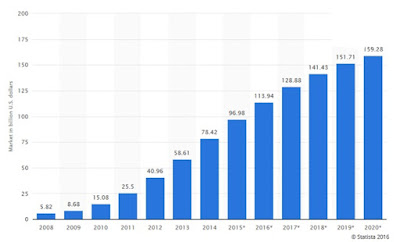Twitter Feed
CloudCamp Federal @ FOSE
Sign up now CloudCamp Federal @ FOSE, March 10,2009, 3pm – 8:30pm at the Walter E. Washington Convention Center, 801 Mount Vernon Place NW , Washington, DC. As a follow-up…
Thank You NVTC “Cool Tech” and TechBISNOW !!
Thank you to Dede Haas, Chris D’Errico and the Northern Virginia Technology Council for the opportunity to speak at yesterday’s NVTC “Cool Tech” Committee meeting! The Agilex facilities were awesome…
A Significant Event in Cloud Interoperability
On Jan 20th, GoGrid released it’s API specification under a Creative Commons license. “The Creative Commons Attribution Share Alike 3.0 license, under which the GoGrid cloudcenter API now falls, allows…
Booz|Allen|Hamilton & Dataline Sponsor 2nd Government Cloud Computing Survey
Dataline, Booz|Allen|Hamilton and the Government Cloud Computing Community have teamed together to sponsor the 2nd Government Cloud Computing Survey. Cloud Computing has come a long way since the first survey six months…
Gartner Lays Out 7-year Plan for Cloud Computing
According to Gartner’s new report, cloud computing will go through three phases over seven years before it will mature as an industry; – Phase 1: 2007 to 2011 — Pioneers…
Cloud Interoperability Magazine Launches
My congratulations goes out today to Reuven Cohen on the launch of Cloud Interoperability Magazine. The site will focus on Cloud Computing, standardization efforts, emerging technologies, and infrastructure API’s. As the new…
Why Can’t We Eliminate the “Technology Refresh” RFP?
In order to maintain life cycle and technology, the Navy is upgrading server farms at fifteen (15) sites and any future sites throughout the Far East, Europe and Middle East…
Cloud & the Government Session at Cloud Computing Expo
Earlier this week I announced that I will be presenting at SYS-CON’s 2nd International Cloud Computing Conference & Expo in New York City this coming March 30-April 1, 2009. During…
CSC and Terremark target US Government with Cloud Computing
Today’s announcement by CSC reinforced the strong wave of cloud computing towards the Federal space. Ranked by Washington Technology Magazine as 9th largest (by contract dollar value) government contractor, this…
Should my agency consider using cloud computing?
This is clearly the question on the minds and lips of every government IT decsionmaker in town. Why should a government agency even consider cloud computing? In reality, the decision…
- Enable cloud service arbitrage based on cost, performance or operational need;
- Help companies migrate operations to the cloud and assist with staff augmentation and training;
- Provide cloud service auditing and SLA monitoring services;
- Help in focusing and managing organizational cloud service demand;
- Provided toolsets to assist in the migration and integration of enterprise applications; and
- Help in change management and the selection and integration of other managed services.
By automating and operationalizing the governance of cloud services, CSBs can efficiently multi-source services and augment them with third party metering and monitoring. Using CSBs, organizations also accelerate their transition to hybrid IT models. This marketplace is typically segmented type of services: cloud brokerage and cloud brokerage enablement, wherein cloud brokerage enablement is further segmented into internal and external brokers. When used internally, cloud enablement platforms helps enterprises adopt the new hybrid IT and multi-sourced operating model. By building organic expertise, companies can personalize IT service consumption and unify
IT service delivery through the use of a corporate self-service store, a dynamic service marketplace, and continuous delivery. This centralized, supply chain approach unifies the order, execution, and management of multi-sourced solutions across legacy and cloud resources, by centrally delegating and tracking execution.
(This post was brought to you by IBM Global Technology Services. For more content like this, visit Point B and Beyond.)
( Thank you. If you enjoyed this article, get free updates by email or RSS – © Copyright Kevin L. Jackson 2016)
Cloud Computing
- CPUcoin Expands CPU/GPU Power Sharing with Cudo Ventures Enterprise Network Partnership
- CPUcoin Expands CPU/GPU Power Sharing with Cudo Ventures Enterprise Network Partnership
- Route1 Announces Q2 2019 Financial Results
- CPUcoin Expands CPU/GPU Power Sharing with Cudo Ventures Enterprise Network Partnership
- ChannelAdvisor to Present at the D.A. Davidson 18th Annual Technology Conference
Cybersecurity
- Route1 Announces Q2 2019 Financial Results
- FIRST US BANCSHARES, INC. DECLARES CASH DIVIDEND
- Business Continuity Management Planning Solution Market is Expected to Grow ~ US$ 1.6 Bn by the end of 2029 - PMR
- Atos delivers Quantum-Learning-as-a-Service to Xofia to enable artificial intelligence solutions
- New Ares IoT Botnet discovered on Android OS based Set-Top Boxes



